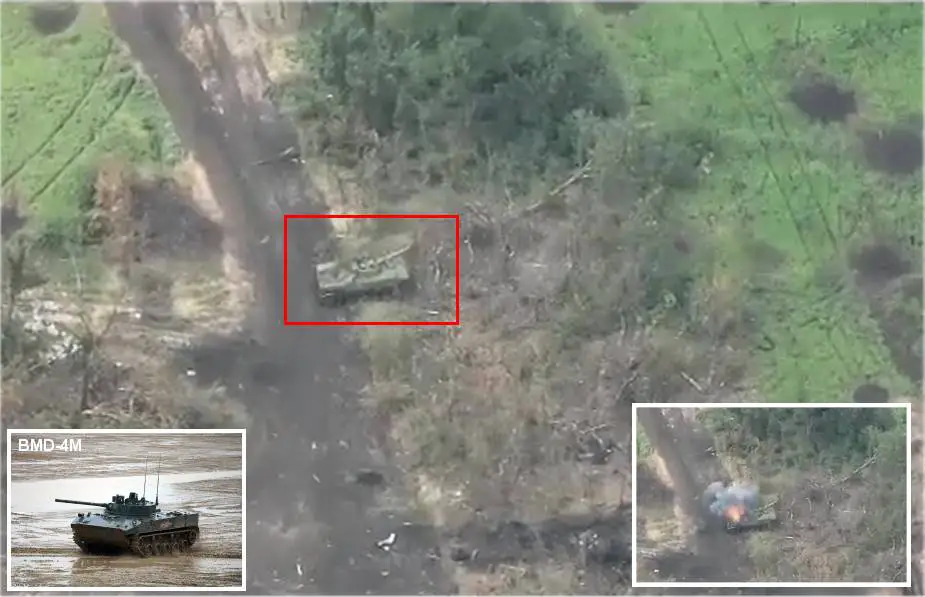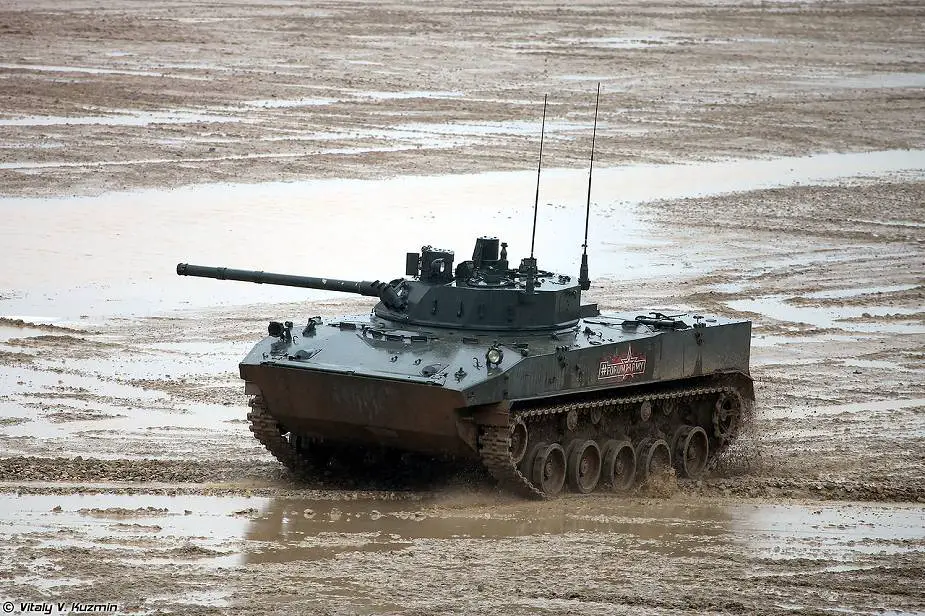- Army
- Conflicts in the world
- Israel - Iran conflict 2025
- Pakistan - India Conflict 2025
- Russia Ukraine War 2022
- Libya conflict day by day
- HAMAS - Israel War 2023
- Operation Serval in Mali French Army
- Sangaris operation Central African Republic
- Sangaris opération militaire République Centreafrique
- Ukraine - Russia conflict
- Syria conflict news
- Defence & Security Industry Technology
- Armies in the world
- Analysis Defense and Security Industry
- Conflicts in the world
- Navy
- Air
Ukrainian soldiers destroy most modern Russian airborne IFV BMD-4M using loitering munition
In a video shared on June 26, 2023, by 'Ukraine Weapons Tracker' via their Twitter account, it was revealed that the Ukrainian National Guard successfully destroyed a Russian BMD-4M. This sophisticated tracked airborne Infantry Fighting Vehicle (IFV) is considered to be one of Russia's most modern military assets. The encounter took place in Donetsk Oblast, a region embroiled in conflict. The Ukrainian forces employed a locally-manufactured loitering munition for the operation, underscoring their adept use of improvised military technologies.
Follow Army Recognition on Google News at this link

Ukrainian National Guard destroyed one Russian BMD-4M modern tracked amphibious airborne IFV Infantry Fighting Vehicle Donetsk Oblast. (Picture source Twitter account Ukraine Weapons Tracker Twitter video)
In the conflict situation in Ukraine, local-made loitering munitions using standard civilian drones armed with grenades or mortar ammunition serve now as a significant strategic tool. These drones, often referred to as suicide drones, represent a unique category of weapon systems. They are designed to engage or attack enemy targets either by self-destruction or by delivering a payload such as a grenade or mortar ammunition.
The appeal of these locally-produced loitering munitions lies in their cost-effectiveness and widespread availability. Standard civilian drones, unlike traditional military hardware, are both economically accessible and readily available, making them an attractive platform for improvised weapon systems.
Moreover, the technical barrier to modifying these drones to carry small munitions is relatively low. With a certain level of technical knowledge and resources, these drones can be converted into effective weapons. This provides Ukrainian military forces the capability to launch targeted strikes or create disturbances without investing in high-cost weaponry or advanced technology.
The BMD-4M is the latest generation of Russian-made amphibious infantry fighting vehicle, designed for airborne deployment. It's the latest version of the BMD-4, which itself originates from the lineage of the BMD-1, a series of airborne infantry fighting vehicles extensively used by the Soviet Union.
The BMD-4M offers enhanced protection, improved mobility, and substantial firepower for airborne units. Its design allows it to be air-dropped along with paratroopers, ensuring immediate armored protection and strong firepower in compact form upon landing.
The main armament of the BMD-4M is a 100mm gun that doubles as a missile launcher. This gun/launcher provides the BMD-4M with the capability to engage a wide variety of targets, including enemy tanks and fortifications, at significant ranges.
In addition to the main gun, the BMD-4M is equipped with a 30mm automatic cannon and machine guns, providing substantial firepower against infantry and light vehicles.
The vehicle is also highly mobile, being lightweight enough for airborne operations, yet robust and versatile for various terrains. It's amphibious by design, enabling it to cross water obstacles without any preparation.
The BMD-4M is, therefore, a formidable fighting machine that provides airborne forces with considerable combat capabilities immediately upon landing. However, like all armored vehicles, it has to balance between armor protection, firepower, and mobility to meet its design objectives.

The BMD-4M is the most modern tracked airborne IFV Infantry Fighting Vehicle in service with the Russian armed forces. (Picture source Vitaly Kuzmin)


























